Anaphi Characteristics
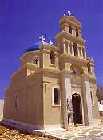
 Anafi
or Anaphi lies at the southern tip of the Cyclades with Santorini its
nearest companion (12 mi). It is 273 nautical miles from Piraeus. It has
38 sq. km of land mass and 32 km of coast. It's a tadpole shaped boulder in the Sea of Crete only an hour from Santorini. The ferry schedule is irregular, but those who stick with and make the trip are rewarded by uncrowded beaches and a slow, traditional lifestyle.
Anafi
or Anaphi lies at the southern tip of the Cyclades with Santorini its
nearest companion (12 mi). It is 273 nautical miles from Piraeus. It has
38 sq. km of land mass and 32 km of coast. It's a tadpole shaped boulder in the Sea of Crete only an hour from Santorini. The ferry schedule is irregular, but those who stick with and make the trip are rewarded by uncrowded beaches and a slow, traditional lifestyle.
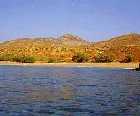 About 300 people live on the
island. There is very little tourism so it's a wonderful place to get back
to nature or to spent time alone. The islanders are friendly and simple, although their sophistication
and the available amenities increase with each passing year's greater influx
of tourism.
About 300 people live on the
island. There is very little tourism so it's a wonderful place to get back
to nature or to spent time alone. The islanders are friendly and simple, although their sophistication
and the available amenities increase with each passing year's greater influx
of tourism.
Very little is grown on Anaphi and has to be imported,
raising prices a bit. Most of the island natives survive by fishing.
Earthquakes originating at Santorini sometimes wriggle across Anaphi.
Island Features
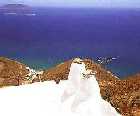
 The harbor, Ayios Nikolaos, is directly below the Hora (also known as Anafi or Horio). There's a steep path or a new road from Aghios Nikolaos to Hora. Hora is a quiet and peaceful place surrounded
by a natural amphitheater. There are typical Cycladic white-domed houses and windmills
with wide views all around.
The harbor, Ayios Nikolaos, is directly below the Hora (also known as Anafi or Horio). There's a steep path or a new road from Aghios Nikolaos to Hora. Hora is a quiet and peaceful place surrounded
by a natural amphitheater. There are typical Cycladic white-domed houses and windmills
with wide views all around.
Pleasant beaches lay along the coast near
the harbor and at the top of the hill the remains of the ancient settlement.
To the NE a path tracts east of Hora to Kastelli, site of
an ancient Roman town and the country chapel of Panagia tou Doraki. This chapel is decorated with a Roman sarcophagi and just the trunk of a statue.
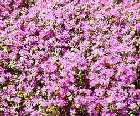 There are several nice beaches around the coast near Aghios Nikolaos. Hike eastward and you'll find the beach at Klisidi with its seasonal taverna. This beach allow camping, but the only facilities are in the seasonal taverna. The north side of the lsland is virtually empty except for an occasional goat path.
There are several nice beaches around the coast near Aghios Nikolaos. Hike eastward and you'll find the beach at Klisidi with its seasonal taverna. This beach allow camping, but the only facilities are in the seasonal taverna. The north side of the lsland is virtually empty except for an occasional goat path.
On the southeast side of the island you'll find Panayia Kalamiotissa. This monastery is built atop an older shrine, and some of the marble in its walls are believed to have come from the old shrine to Apollo. The site of this monastery is where an icon of the Virgin was found hanging on a cane. Reason enough to build a church! The views from here are spectacular, especially at sunrise. Getting up for the sunrise isn't as hard as it sounds on Anaphi, since there's no late night party scene here.
Near the monastery, you can stand on the highest rock formation in the Medierranean Sea at Monastery Rock. The rock reaches a height of 470m above sea level.
Also near Panayia Kalamiotissa, you can poke around in a cave knows as an old dragon's lair called Drakontospilo. Beware the dragon!
Towns
The town is Hora, where rooms are to be found. There was a medieval Kastro at Hora.
Drinking and Dining
Traditional eateries are available. Some of the hotels have restaurants on site.
History

 Myth has it that upon killing the bronze giant Talus with the help of Medea,
Jason and his Argonauts made their escape from Crete only to be met by
a huge storm. Jason's patron deity Apollo, in answer to his plea for succor,
caused Anaphi to rise from the sea to shelter them. Talus was also
known as Perdix or Partridge (as in the fowl) and since Anaphi was over
run with partridges it became closely associated with Talus.
Myth has it that upon killing the bronze giant Talus with the help of Medea,
Jason and his Argonauts made their escape from Crete only to be met by
a huge storm. Jason's patron deity Apollo, in answer to his plea for succor,
caused Anaphi to rise from the sea to shelter them. Talus was also
known as Perdix or Partridge (as in the fowl) and since Anaphi was over
run with partridges it became closely associated with Talus.
 Now as you
may or may not know, if your Pliney and Aristotle are rusty, partridges
are extremely lascivious birds. Pliney wrote that a hen partridge merely
had to hear or smell a cock partridge to become impregnated and further
noted that if the females were roosting, the males practiced sodomy to
relieve their sexual frustrations. In fact they become so obsessed with
their mating rituals that you don't even have to sneak up to them to kill
them while they are at it. Unfortunately, partridges are extinct on Anaphi, so you won't be able to witness this phenomenon while there.
Now as you
may or may not know, if your Pliney and Aristotle are rusty, partridges
are extremely lascivious birds. Pliney wrote that a hen partridge merely
had to hear or smell a cock partridge to become impregnated and further
noted that if the females were roosting, the males practiced sodomy to
relieve their sexual frustrations. In fact they become so obsessed with
their mating rituals that you don't even have to sneak up to them to kill
them while they are at it. Unfortunately, partridges are extinct on Anaphi, so you won't be able to witness this phenomenon while there.
However, the connection to Apollo remains. Scholars have found that many of the songs and festivals on Anaphi bear traces of the ancient Apollo worship. If you are there during a festival, there is plenty of dancing and cavorting.
Long after
the above events, Anafi suffered the same fate as the rest of the Cyclades–Phillip of Macedon, Alexander the Great, Alexanders' Generals, The Byzantines,
The Duchy of Naxos and the Crusader Barons, Turkish pirates, and Turks.
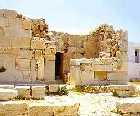
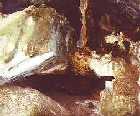 In the photo are the ruins of the Castro (castle) of Guglielmo Crispi
which fell to the Turks in 1537. Mt. Kalamos, the large tadpole like protrubence
at Anaphis' SE end is the site of the 16th C Monastery of Panagia Kalamiotissa
and also the site of the Dragons Cave (Drakontospilo) with stalagmites and
stalactites. You must bring your own flashlite and supplies.
In the photo are the ruins of the Castro (castle) of Guglielmo Crispi
which fell to the Turks in 1537. Mt. Kalamos, the large tadpole like protrubence
at Anaphis' SE end is the site of the 16th C Monastery of Panagia Kalamiotissa
and also the site of the Dragons Cave (Drakontospilo) with stalagmites and
stalactites. You must bring your own flashlite and supplies.




